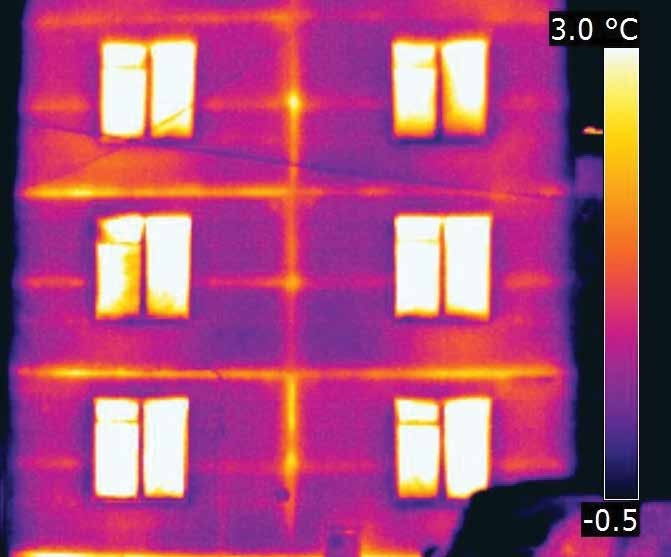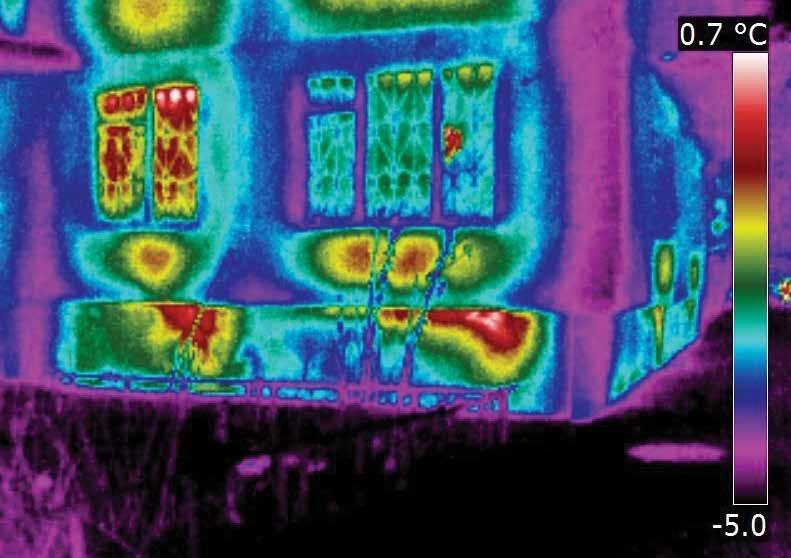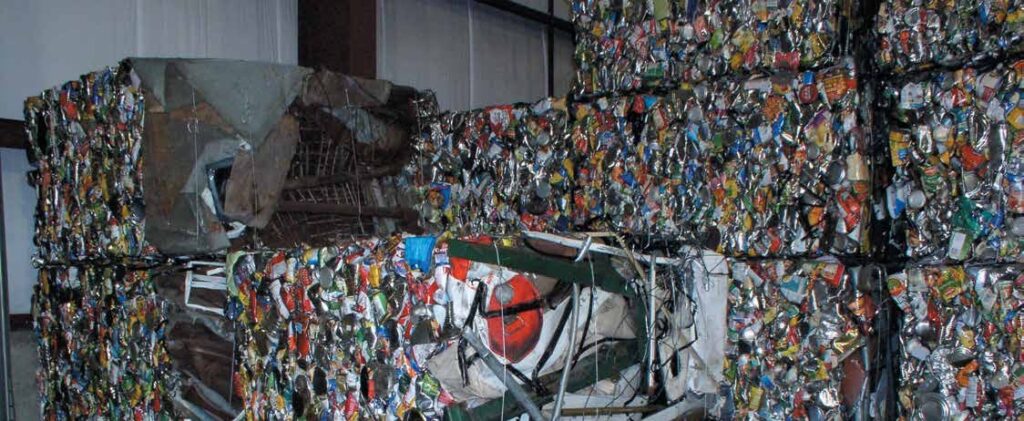Greenhouse gases influence the planet’s climate, and emissions of greenhouse gases depend on our habits. Let’s see how we can reduce our carbon footprint and help the planet.
Indoor air temperature and comfortable temperatures
In countries with colder climates almost all buildings need heating and heat insulation. Most heating systems in old buildings were built at a time when prices for heat energy were low and energy efficiency was not a priority. In many cities thermal energy is generated by burning gas or coal, which causes greenhouse gas emissions that affect the climate.
Alternative ways of producing heat energy include solar collectors and heat pumps, but these technologies remain expensive and are not easy to apply for an old multistorey apartment building.
The easiest solution is to improve heat insulation. Heat loss depends on two factors: the difference in temperature between indoors and outdoors and the heat-insulating properties of walls, ceilings, windows and floors. Buildings lose a significant part of their heat through the ventilation system. Heat loss can also occur due to latent defects, design errors, poor quality of construction, and due to ageing of the building and of thermal insulation materials. It is possible to see how well walls, ceilings and windows retain heat, and to detect where leakage of heat is occurring by means of thermal imaging, carried out by a special visual recording device that shows the temperature distribution on any surface, such as the wall of a house. The temperature distribution is shown on the display (and recorded in the memory) of the device camera as a colour field, where a certain temperature corresponds to a certain colour. Alongside the image there is always a scale showing the correspondence between colours in the picture and specific temperature ranges.
The greatest heat loss in any prefabricated building occurs at the joints between the panels of the outer wall. The only remedy (short of demolition) is full-scale repair of the facade using the latest heat-retaining plasters. The quality of window installation can be decisive for levels of heat loss, even in new and renovated buildings.
Figure 3.3.2 A five-storey apartment building from the 1960s ‘glows’ where heat floods out at the joints between prefabricated panels

Figure 3.3.3 Heat loss on the corner of this brick building is intense at the junction of balcony glazing and the wall, and also where ceilings meet the walls

Figure 3.3.4 The red spots are where radiators are fixed to the wall in this old apartment building

 Heat insulation for apartments
Heat insulation for apartments
Options to save energy by improving heat insulation for apartments range from replacing windows with modern that have double and triple glass packages to better doors, improved insulation of walls, floors and ceilings and replacing heating radiators with more efficient ones.
- Modern window designs, made from plastic or wood, offer excellent protection from the cold. They are easy to maintain and easy to operate.
- If you cannot replace the window with one that is more modern, do your best to insulate it. Pass a lighted candle or a thin feather along the frames and fill the gaps causing draughts. The best time to do this is in the autumn, as the plaster will not set properly if the temperature is too hot or cold. Be sure that the frame is dry when you apply it.
- Seal the windows for the One advantage of modern insulation systems is that you can still open and close windows even after draught excluders have been fitted.
- If the room is still difficult to keep warm, use heavy curtains on the windows.
- You can purchase heat-reflective film that adheres to the inside of the double panes and reflects heat back into the apartment. Some of these films are removable in the summertime. However, the film lets only 80% of daylight into the room, and that can be a critical loss for apartments that are short of light (e.g., those on the ground floor, or north-facing, or with a balcony overhang from the next storey, or in the shade of a tree). But it is worth weighing the pros and cons: adults may rarely be at home in daylight hours during winter and children are at school or elsewhere, so a reflective film can be a definite advantage.
- If the front door lets in the cold, the best thing to do is to replace it, but take care to choose a good installer. There is not a great deal to choose between different doors, but the quality of their installation makes all the difference for reducing heat loss, and for noise insulation.
- If the door cannot be changed, you can improve its insulation by sticking a sheet of polystyrene or other insulating material to it and then covering it with synthetic leather. You should also close the gap under the door, through which heat escapes, by fixing a draught excluder or raising the threshold under the door.
- If it is cold inside a building, the walls require insulation. External walls can be best insulated using a ‘wet facade’ technology: a thermally insulating material (based on mineral or glass wool) is fixed to the wall and coated with paint or plastered over.
- Another way of retaining heat is by careful arrangement of furniture. Place wardrobes along the coldest walls: they will serve as an additional barrier against cold penetrating into the The furniture in the room should not hinder the circulation of warm air, so do not put any furniture near to the radiator.
- The easiest and cheapest way to insulate the floor is to put down linoleum on a felt But do not use glue, or the felt will lose its insulating properties. You can also lay an insulating film or a special insulating material under any floor surface.
- The most obvious way to improve the quality of heating in a room is to replace old radiators with modern bimetallic This must be done before the start of the heating season. When buying new radiators, choose those with adjusters.
- If replacement is not possible, the old radiators can be made to operate more efficiently. Remove old paint, scrape the surface, and paint them in dark colours: a dark and smooth surface gives five to 10% more heat. You can also take a sheet of plywood, paint it with silver paint or cover it with metal foil and place it behind the radiator to reflect heat back into the room instead of heating the walls. It is also important to keep radiators free of dust, which hinders heat Make sure that curtains and furniture are not preventing the flow of heat from the radiator into the room.
- Don’t overheat your room! Wear something warmer rather than overheating the air.
- When you ventilate the apartment, do it quickly and completely: open the window and door wide to make air circulate.
 Cooking
Cooking
Your electric cooker is the most powerful appliance in your home: with all burners and the oven switched on, it can consume up to 20 kw of power, which is 10 times more than a large electric kettle or iron.
- Remember that the bottoms of the pots and pans you use on the cooker must be smooth and It takes up to 40% longer to cook food in a pan with an uneven or concave bottom.
- The pan should be the same size as the burner to avoid heat
- Use a lid! Energy consumption is 5 times greater when you cook food in an open dish.
- You can often turn off the burner on an electric cooker five minutes before the food is ready: the residual heat will complete the cooking process.
- Special appliances (coffee makers, pressure cookers, multicookers) can prepare food using 30–40% less energy than an ordinary cooker and in half the time.
- If you pour water over the cereal a few hours before cooking porridge, it will cook more quickly and contain more vitamins. Buckwheat can be soaked for about an hour, rice for longer, and beans or peas can be left to soak overnight. This also saves you time – if food cooks more quickly, you don’t have to spend time watching it.
- Don’t use too much water when you are boiling
- Don’t fill the kettle to the brim if you only need water for one
 Refrigerators
Refrigerators
The refrigerator is the most energy-intensive appliance in your home, and the size of your electricity bill depends on how good it is and how you use it. A modern refrigerator uses three or even five time less energy than one manufactured 20 years ago with the same size and features, especially if the old seals have lost their elasticity, so that warm air is getting into the refrigerator. For an economical family of one or two people, a new refrigerator can lower electricity bills by 1.5 times.
- Before opening the fridge, think about what you need from Just a few seconds is enough for warm air from the room to displace the cold air inside it.
- If the fridge is large, it is a good idea to fill it up with jams and pickles: when you open the fridge warm air quickly displaces the cold air, but if the fridge is full, then less warm air gets
- Never put food into the fridge when it is still warm! And position the fridge as far as possible away from radiators, the cooker and direct sunlight.
- Make sure that containers with produce are covered when you put them into the fridge so that moisture does not evaporate and condense on the fridge walls.
- If the fridge needs to be defrosted manually, do it
 Lighting
Lighting
You can make energy savings of up to 40% by using modern lighting equipment and applying some practical tips.
- Spotlighting in places where we work or read often works better than powerful ceiling lights. Use portable lamps and fixtures.
- A smooth white surface reflects 80% of the light directed at it, while a dark green surface reflects only 15%, and a black surface just 9%. When choosing furniture, wallpaper, and curtains for a room, give preference to lighter colours.
- There is a very simple and highly effective way of improving lighting efficiency: wipe the dust from light bulbs and glass windows regularly.
- Most of the daylight comes into a room through the upper part of the window, so it is particularly important not to block it.
 Appliances
Appliances
You can reduce your energy consumption by learning how to make better use of household appliances.
- When choosing new audio, video, or computer equipment, give preference to those with lower power Of course, purchase decisions in the family are up to parents, but you can always help them to decide by telling them what you know – they may well take notice.
- Turn all electrical appliances right off when you are not using them. When you turn off the TV using a console, it goes into ‘sleep’ mode, which uses less electricity, but still some
- Do not leave chargers for mobile devices permanently plugged
- Use high-quality plug extensions with wide-gauge cords. Narrow cords will grow warm, which means that electricity is being lost as heat instead of powering your devices.
 Water consumption
Water consumption
Actions relating to water consumption can save both, energy, and water.
- Wash in the shower and only take a bath on special
- Ten drops per minute from the tap add up to 263 litres of water in a Mend the leaky tap.
- There are different types of Taps with rubber washers may leak more often, but that little piece of rubber is easy to replace. Ball and ceramic taps may last a very long time, but only if the pipe that carries water to them has filters installed, because the polished parts in such taps are very sensitive to rust particles in the water. Ceramic taps must be closed gently. Thermostatic taps, which appeared on the market recently, are more expensive, but they can adjust the water temperature quickly and accurately, which reduces unnecessary expense.
- Get into the habit of closing a tap when you don’t need water to run continuously. Some families peel potatoes and wash them under running water, but you can do just as well using basins or Washing dishes is easier if you wash them all together and then rinse them all together. Modern sinks often have plugs, so you can use the sink itself as a basin.

 Washing and ironing
Washing and ironing
Reducing emissions from washing and ironing can help to save energy, emissions, your time and keep your clothes longer.
- When you wash clothes in the washing machine, there is no need to heat the water to 90°C and run a full cycle: that is only necessary for very dirty For linen or only slightly soiled clothes, an economy wash cycle is quite sufficient (every machine offers a choice of economy or quick washes) and modern detergents contain enzymes that ensure a proper wash even at low temperatures.
Such a wash uses nearly 10 times less power than a half-hour wash at 90°C.
- Wait until you have a full load before using the washing machine – it is uneconomical to wash one pair of jeans.
- Make sure that the items to be washed are spread evenly in the drum of the machine. Otherwise, the machine will not be able to provide rapid rotation of the If the load is evenly spread, there will be less strain on the machine, the wash cycle will take less time and parts of the washing machine will last longer.
- When ironing washed clothes, sort them by different materials: you can start with lower temperatures and then move on to things that require high temperatures, and small items can be left for ironing after the iron has been turned off.
- Some things do not need ironing – it is enough to hang them neatly on clothes
 Recycling and re-using
Recycling and re-using
We are used to seeing an abundance of things around us, but they do not appear from nowhere. Everything we use has been produced using energy and by the work of many people. Waste from the production of things and ever larger rubbish heaps worsen our living conditions and affect the climate.
- Before you buy something new, think to yourself whether you really need Perhaps you only need it for a short time and would be as well borrowing it from someone else.
- Look after things to make them last
- If you have something that you no longer need, think whether it could be useful to somebody We can give toys or clothes we have grown out of to the kindergarten, the orphanage or just to other children we know. There are sites on the Internet where people offer things they don’t need for free and other people are often ready to take them. Packing tubes or boxes can be turned into something new, old dolls and toys can be restored, and there are people who can fix a broken appliance and make it work again.
- You can donate old books that you won’t read again to the library or to book-exchanges, which have become popular in recent years: these are special shelves in some bookshops and libraries where you can bring any book of your own and exchange for it a book that someone else has brought there.
- If a thing is completely broken, the material from which it is made can be You can check on the Internet whether there is any reception point in your town or city for recyclable objects – you may be lucky and find such a point near to where you live. You can also put up notices to bring people in your neighbourhood together for recycling waste and unwanted items, or team up with friends, or talk to teachers at school. Together, you might gather enough plastic, paper, and metal to make a trip to the recycling centre worthwhile.
- Take your own bags when you go shopping, so that you don’t have to use new ones at the checkout (save that convenience for when you really need it). Plastic bags for shopping are now freely available in shops, and they are sometimes convenient and necessary, but you can always tell the checkout staff that you don’t need Several countries are now introducing a charge for plastic bags, which makes it worth your while to take your own bags to use.
- It makes sense to buy everyday goods that keep for a long time (detergent, shampoo, some cereals, etc.) in large bulk packages. Remind your parents of that.
Figure 3.3.3 Metal recycling bales

Table 3.3.1 Comparison between paper entirely produced from virgin pulp and from recycled materials (per tonne of paper)
| Paper made entirely from virgin pulp | Paper made entirely from recycled materials | Saving |
Timber | 3 tonnes | 0 tonnes | 3 tonnes |
| Energy | 11,140 kWh | 6,450 kWh | 4,690 kWh |
| Greenhouse gas emissions | 2,581 kg of CO2 | 1,625 kg of CO2 | 956 kg of CO2 |
| Waste water | 72,000 litres | 39,100 litres | 33,100 litres |
| Solid waste | 1,033 kg | 506 kg | 528 kg |
If we save one tonne of paper, we also save 13 tonnes of oil, 4,100 kilowatt-hours of electricity and 32 tonnes of water. The production and printing of one sheet of A4 paper generates 28 g of CO2, and copying a single sheet of A4 380 g of CO2.
Energy savings in production using recycled materials
Aluminium – 95%
Zinc – 60–70%
Paper – 64%
Copper – 70–85%
Magnesium – 95%
Plastic – 80–88%
Lead – 60–80%
Steel – 70%
Glass – 68%
So, you can reduce your carbon footprint by using less energy and not wasting energy and water, by not buying things you don’t need and things with excess packaging, by getting your rubbish recycled, by walking and using a bicycle whenever possible, by buying locally produced food. And finally, remember that our main allies in helping the climate are plants. Take care of them and plant new ones whenever and wherever you can.

Figure 3.3.6 Climate change: How to reduce your carbon footprint

QUESTIONS
1
What is a carbon footprint?
2
What units are used to measure a carbon footprint?
3
Which of these has a bigger carbon footprint: strawberries grown in the garden at the local farm, or strawberries brought from abroad and beautifully packaged? Why?
4
It’s cold outside, and the heating isn’t working indoors.
Which of these would be most useful to keep warm at home and why?
- wear a warm sweater and socks;
- put a carpet under your feet;
- have something to eat;
- drink hot tea;
- turn on an electric heater;
- dance, jump or run;
- light a fire in the stove or fireplace;
- take a hot bath;
- sit in the
5
What is more economical and when is it more economical – taking a bath or taking a shower?
6
Can installation of water meters help to save energy? Why?
7
Do we use energy when we use water in an apartment building? What sort of energy do we use?
8
What do you already do in your home to save energy?
9
What important things do you need to remember when using a fridge?

TASKS

1
Test your carbon footprint
A. When you buy fruits and vegetables in a shop, what do you usually choose:
- local, unpackaged produce (1 point)
- unpackaged produce from the southern regions of your country (2 points)
- unpackaged produce from France, the Netherlands, Argentina and other countries (3 points)
- imported produce, individually pre-packed (4 points)
B. The bag you use for shopping is:
- linen or cotton (1 point)
- paper (2 points)
- a plastic bag that I take from home (3 points)
- a plastic bag that I take or buy when I pay for goods in the shop (4 points)
C. When you buy drinks, what sort of container are they usually in?
- paper (1 point)
- glass (2 points)
- aluminium (3 points)
- plastic (4 points)
D. What book do you prefer to read:
- a new one, bought in a shop (4 points)
- an electronic one (3 points)
- one that has already been read (2 points)
- one from the library (1 point)
E. When you give someone a present, do you prefer:
- bright and attractive wrapping paper, whatever it is made of (4 points)
- paper with an environmental label to show that it is recyclable (2 points)
- a used box or bag that I specially decorate (2 points)
- to give the present without packaging (1 point)
Answers
- From 14 to 16 points: An elephant’s carbon footprint! Better put all that weight into saving energy.
- From 11 to 13 points: The carbon footprint of a horse’s hoof! Put on your harness and get down some energy
- From 8 to 10 points: You have the carbon footprint of a cat’s paw! But don’t sit purring – you could do even better.
- From 5 to 7 points: Great! You have the carbon footprint of a mouse!
You can be proud of yourself – all you need to do now is persuade others to be like you.
2
Draw a table with four columns. Use the first column to note down cases of inefficient energy use that you see around you (on the street, at home, at school). In the second column explain how energy could be saved or used more efficiently in all these cases. In the third column, write down cases you have seen of efficient energy use. And in the fourth column, write down one occasion each day when you personally used energy more efficiently and did the planet some good. Compare your table with the tables of your classmates. Make a report on the results.
3
Go through all your things (preferably with your parents), find out where they came from and mark that place on the world map. Put things you bought or were given, but don’t use, into a separate group. Calculate how far they travelled to reach you. Now you can make a chart (diagram, map) of what you have found out, showing where things were made, what use they are to you (necessary, unnecessary, useful from time to time, good for recycling, good for making something else out of, etc.).
4
Divide the class into seven groups. Each group draws a straw to select a focus group: younger students; older students; housewives; pensioners; industrialists; politicians; teachers. Each group has to develop a project to promote energy saving and energy efficiency for its focus group.
Your tasks are to:
- think of a slogan or slogans for an information campaign
- design a poster to encourage energy saving in your group
- develop a programme that will help your focus group to grasp the principles of energy saving and carry them out
Put some original ideas into your programme – from a puppet show to publishing a book, to proposals for reform of the state (depending on the focus group).
After the projects have been presented, display the best posters at school.


